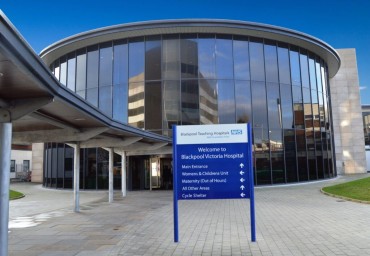Research, trials and audits underway
When performing coronary artery bypass grafting the surgeon will use veins from your legs to act as a blood vessel to bypass diseased arteries in your heart.
Traditionally these veins are removed from both legs from the ankle to the upper thigh. Unfortunately not all of this vein may be useful due to disease but this was not found out until the veins were removed.
At the Lancashire Cardiac Centre we are trialling a pioneering technique known as endovascular vein harvesting. To do this surgeons remove the vein through a tiny incision near the patient’s knee. An endoscopic system with a tiny video camera is inserted in the small incision. The tiny video camera projects the image of the inside of the patient’s leg onto a TV monitor – helping the surgical team to remove the vein with minimal trauma to the leg.
After the surgeon has separated the vein from surrounding tissue, the system is used to pull the vein out. The surgeon then uses the vein as a graft, sewn in place to bypass the blocked artery. Endovascular Vein Harvesting promises benefits for patients by reducing pain, the possibility of infection and providing a better cosmetic outcome.
Certain patients cannot undergo the normal replacement of valves. Small numbers of these patient may be suitable for a new approach to aortic valve replacement; using an artificial valve passed to the heart using a catheter through a hole in the groin.
In a similar way that the majority of the procedures are performed in the cardiac catheterisation laboratories, a balloon is fed to the heart but instead of pushing aside disease in coronary arteries it is used to open up the aortic valve to make it ready for a replacement valve. The replacement is then advanced across the narrowed valve (held in a cage system) and secured in place.
Blackpool is one of a limited number of hospitals that have being given the opportunity to utilise this approach and so far the cases are going well.
As these patients do not have the typical valve operation, and the procedure is much less invasive the recovery time is much quicker and we hope they can go onto leading normal lives again.
Set up in April 2009 this service serves to treat patients who are in the process of having a heart attack. Patient can be brought directly by ambulance from calling 999 to our cardiac catheter laboratory where they will undergo a procedure known as angioplasty or percutaneous coronary intervention (PCI), which will involve passing catheters to the heart and injecting dye into the heart arteries to see where the blockages is causing the heart attack.
This blockage can then be immediately treated with balloons and stents to hold open the artery.
This is done as an emergency procedure as the sooner the blockage is opened, the soon the heart can received proper blood flow which will limit the amount of heart muscle damaged, giving the patient a better chance of recovery and a much improved quality of life.
The cardiac education centre is a purpose built area with state-of-the-art learning facilities. The centre has a 63 seat lecture theatre with the ability to link in to cameras within the cardiac theatre for teaching purposes. A clinical skills “wet lab” with video camera facilities is also available and can be used for dissection.
The centre also has a large teaching room which can be divided into two smaller rooms, each with audio visual equipment and a smaller seminar room with plasma screen. There is a library and reading area for quiet out-of-hours study which also doubles up as an information room for mandatory training sessions and e-learning facilitates.



